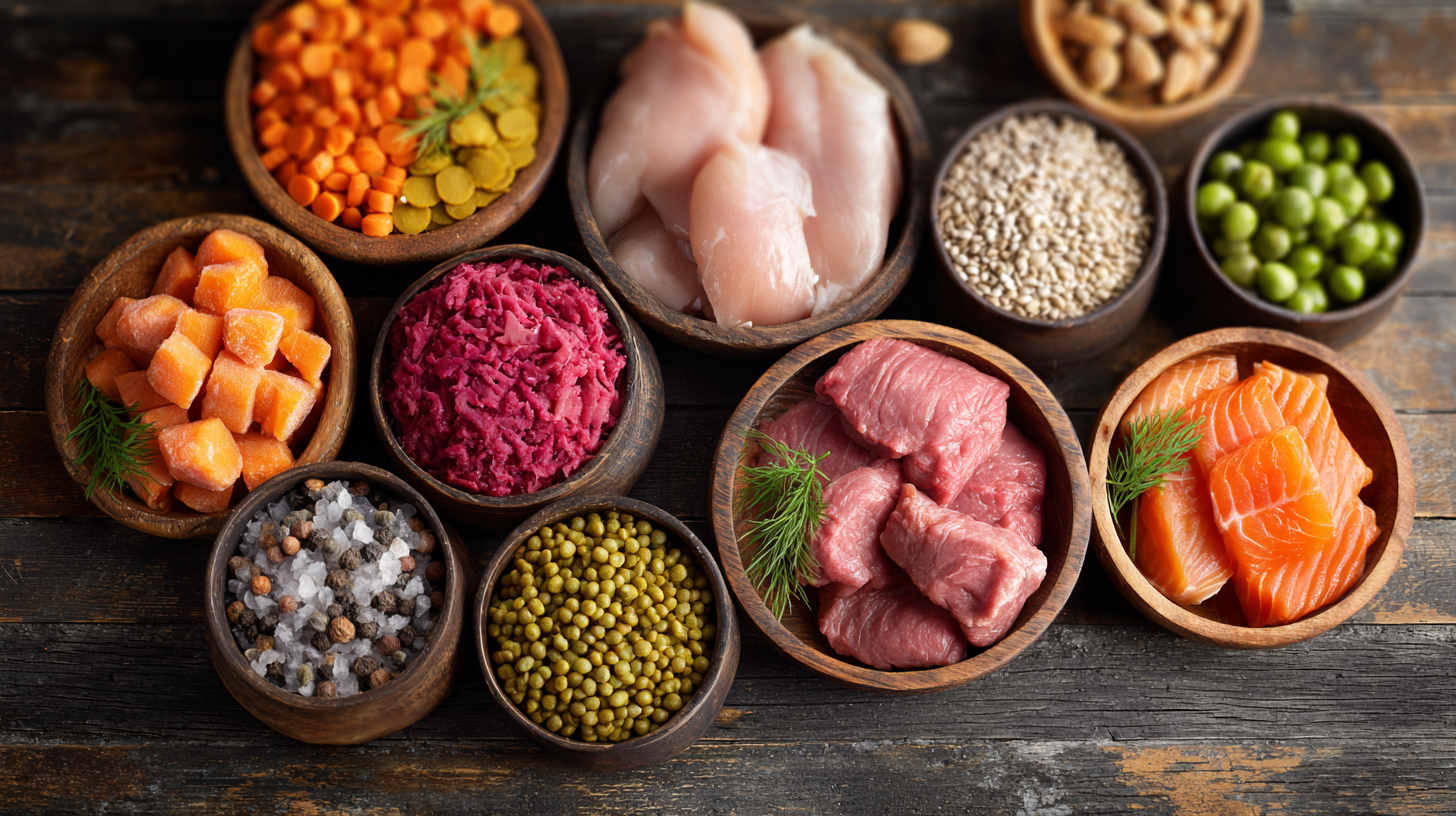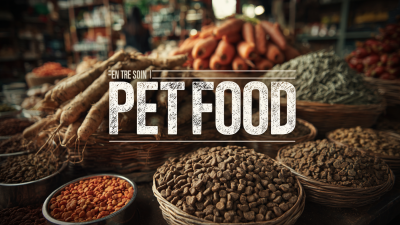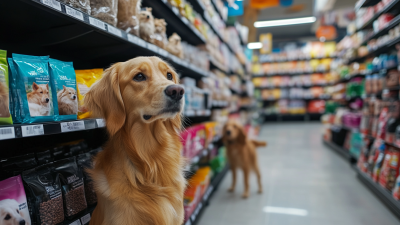Choosing the best pet food for your beloved furry friend is crucial for ensuring their health and happiness. The right nutrition can significantly impact your pet's growth, energy levels, and overall well-being. With a myriad of options available on the market, pet owners often find themselves overwhelmed by the choices. Understanding your pet's specific dietary needs, the ingredients in pet food, and the potential benefits of various formulations can make the decision-making process more manageable.

This guide will provide you with essential insights into selecting the ideal pet food, considering factors such as age, breed, activity level, and any health concerns your pet may have. By taking the time to educate yourself on pet food options, you can contribute to your furry friend's long and joyful life.
Choosing the right pet food is crucial for ensuring your furry friend's health and happiness. Understanding your pet's nutritional needs and dietary requirements plays a significant role in maintaining their well-being. With the global pet care market projected to reach a staggering $259.37 billion by 2024, and expected to grow to $427.75 billion by 2032, the importance of providing high-quality nutrition for pets has never been more evident.
The launch of the first "China Pet Nutrition Guidelines" by the Chinese Nutrition Society signifies a growing recognition of the need for professional nutritional advice for pets. This initiative aims to fill critical knowledge gaps in the field of pet nutrition and supports pet owners in making informed dietary choices. By prioritizing a balanced diet that meets specific nutritional needs, pet owners can contribute significantly to their pets' health, potentially enhancing their quality of life and longevity. Understanding these dietary requirements not only fosters better health outcomes but also ensures that our beloved companions thrive in their daily lives.
When selecting pet food, understanding how to identify quality ingredients on the label is crucial for ensuring your furry friend’s health and happiness. Start by looking for whole ingredients listed at the beginning of the ingredient list. High-quality pet food should primarily feature recognizable protein sources, such as chicken, beef, or fish, rather than vague terms like "meat by-products." These whole foods provide the essential amino acids and nutritional benefits that your pet needs.
In addition to protein sources, pay attention to the presence of fruits and vegetables. Ingredients like sweet potatoes, blueberries, and spinach are excellent indicators of a nutrient-rich formula. Avoid foods with excessive fillers, such as corn and soy, which may offer little nutritional value and can lead to weight gain. Lastly, check for the absence of artificial preservatives, colors, and flavors, opting instead for options that use natural ingredients to enhance flavor and shelf life. By thoroughly analyzing pet food labels, you can make informed decisions that support your pet’s overall well-being.
This bar chart illustrates the percentage of key quality ingredients found in various types of pet food, helping you to make informed choices for your furry friend's health and happiness.
When it comes to choosing the best pet food for your furry friend, understanding the strengths and weaknesses of different types of options—dry, wet, and raw—is crucial. Each type offers unique benefits and can cater to your dog's specific needs. Dry food is convenient, easy to store, and often promotes dental health by reducing plaque build-up. However, it may lack enough moisture for dogs that need additional hydration.
On the other hand, wet food is appealing due to its high moisture content, making it an excellent choice for dogs who may not drink enough water. It often contains more real meat and can be easier for dogs with dental issues to chew. However, it can be pricier and may need to be fed more frequently.
Raw food diets are gaining popularity, but they come with their own set of considerations. While they can provide a diet closer to what dogs might eat in the wild, raw feeding requires careful handling to ensure safety and balanced nutrition.
**Tips:** Always consult your veterinarian before making significant changes to your pet's diet. Transitioning between food types should be gradual to avoid digestive upset. Also, monitor your dog’s health and weight regularly to ensure you are meeting their dietary needs effectively.
| Type of Pet Food | Nutritional Value | Cost per Serving | Shelf Life | Ease of Storage | Popular for |
|---|---|---|---|---|---|
| Dry Food (Kibble) | Moderate to High | $0.50 | Up to 18 months | Easy | Cats & Dogs |
| Wet Food (Canned) | High | $1.50 | Up to 3 years | Requires refrigeration | Dogs |
| Raw Food | Very High | $2.00 | Up to 6 months | Requires careful handling | Cats |
| Freeze-Dried Food | High | $2.50 | Up to 2 years | Easy | Dogs & Cats |
When choosing the best pet food for your furry friend, it's essential to consider factors such as their age, breed, and any existing health conditions. Recent market analyses reveal that the pet food industry is experiencing sustained growth, with projections indicating the overall market could reach 1.668 trillion yuan in China alone, making up 48% of the pet market. This gradual shift towards specialized and tailored diets reflects a broader understanding of the nutritional needs of pets at different life stages.

For instance, younger pets often require food rich in protein and essential nutrients for growth and development, while older pets may benefit from diets designed to manage weight and health issues. Additionally, the rising awareness of pet wellness is reflected in increased consumer demand for therapeutic diets that prevent disease progression. Reports show that brands focusing on fresh, customized food options are gaining remarkable traction, demonstrating that pet owners are willing to invest in high-quality nutrition for their companions. Understanding your pet's unique characteristics is crucial in navigating this diverse marketplace and ensuring their health and happiness.
Transitioning your pet to a new food can be a delicate process, especially if you’ve noticed changes in their routine, such as adjusting to your return to the office. To ensure a smooth adjustment, it's important to introduce the new food gradually. Start by mixing a small amount of the new food with their current food, gradually increasing the new food percentage over a week or so. This helps their digestive system adapt and reduces the likelihood of an upset stomach.
Additionally, consider the emotional needs of your pet during this transition. With children back in school or owners returning to the office, pets may experience anxiety or loneliness. Maintaining a consistent feeding schedule and creating a positive mealtime environment can help ease their worries. Engage them with interactive toys or puzzles during your absence to keep them occupied, supporting both their mental stimulation and the adaptation to their new food. By following these strategies, you can enhance your furry friend’s health and happiness during this adjustment period.






